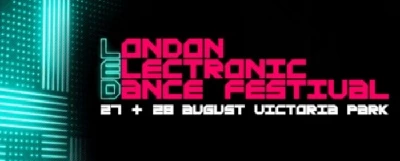Miscellaneous
-
August 2010
published: 29 /
7 /
2010

With the London Electronic Dance Festival due to take place at the end of August, Ben Howarth, in his regular 'Condemned to Rock 'n' Roll' column, asks what the future holds for dance music
Article
Every day this month, as I walk down the windy staircase at Mornington Crescent tube station to begin my evening commute, I pass a large poster for the LED Festival, which will be held in Mile End’s Victoria Park at the end of this month.
LED, in this instance, stands for London Electronic Dance festival, a concept I now find rather quaint. Dance Music, you may remember, was a popular genre at the turn of the Millennium. Sir Elton John once predicted that it would eventually supersede guitar-based pop music entirely, but (in common with all types of music where strong melodies aren’t the central appeal) its likely impact was overstated.
Looking at the poster more carefully, I see that some of the acts at the festival are just dance music (in the sense that you might dance to the songs as well as sing along), but for the most part, the music will be Dance Music (with drum beats at the front of the mix and vocals liberated from other people’s records). This is surely the only summer music festival of note that will be headlined by Leftfield - whose income from "that Guinness Advert" has possibly finally run out. I’m sure those present at the LED festival will enjoy themselves and some of them may even be under 30. But, such nostalgia trips would surprise anyone travelling forward in time from 1995, fond as many Dance fans were back then of labelling indie guitar fans luddites.
Dance music never assumed the cultural ubiquity that appeared to be its birthright back when Leftfield released their mega-selling ‘Leftism’. This was music crafted for mega-clubs and raves. Radical reform of licensing laws between 1997 and 2005 ensured that night life has now returned to city centres, where drink promotions and on-hand police keep people off drugs, and where the lifeblood of casual punters requires a play list culled mostly from the pop charts. Leftfield’s kind of dance music now gets only very limited exposure to large audiences.
But, most of the blame for Dance’s decline still falls on the awful music. ‘Leftism’, remarkably, qualifies for a five-star rating on the All Music Guide, and probably has a place on many of our readers’ shelves. How many of you have actually listened to it recently? Although it does contain the odd transcendent moment, most of this patience sapping album (well over an hour, with only one of its eleven songs coming in at less than five minutes) is repetitive and totally lacking any kind of melody.
Its not the only supposedly classic dance album to have totally failed the test of time. The recent reissue of the Prodigy’s ‘Music for the Jilted Generation’ exposed it as severely dated, while actually listening to his music proved rumours of Aphex Twin’s greatness seriously inflated (Aphex Twin will also be at the LED weekend). All these bands have produced the occasional good single, but any attempt to listen to a whole album quickly wears you down.
Back when dance music was popular, the BBC’s Steve Lamacq was one of its most important champions and played a big part in persuading indie guitar fans that it was worth also investing in music made by computers. At this time, he used to run a feature called ‘Genre Graveyard’, where he looked at musical genres that hadn’t quite cemented their place in the music dictionary (Grebo, anyone?). I wonder if he ever realised that dance music would eventually be consigned to it as well.
So is there any hope for Dance Music? Funnily enough, I still think so. The bargain prices at Amazon have allowed me to find two excellent examples recently.
The first came from my old favourites Air, who are best know for the easy-listening ‘Moon Safari’, but whose best work came later (the geeky ‘10,000 Hz Legend‘, packed with prog references and the sublime, precise ‘Talkie Walkie’).
Air’s most recent album, ‘Love 2’ was a shameless attempt to recreate ‘Moon Safari’, the only album the French duo have made much money with, but if you were to criticise it for this, you’d miss the gorgeousness of the music. ‘Love 2’ sounds both completely modern and timeless, works well either as a complete album or shuffled in amongst an Ipod play-list and was perhaps the most criminally ignored album of last year. It’s synth-based music, it would have been called ‘Dance Music’, probably, in the mid-90s and its beautiful.
Equally overlooked is the most recent album from Underworld, ‘Oblivion With Bells’ (2007), which sounds just like mid-90s techno, but has none of its flaws. Another duo, they have clearly realised that they won’t be heard on as many dancefloors these days, and have focused on musical ideas, instead of massive beats. Though Karl Hyde’s half-spoken vocals are never what we would call melodic, they merge delightfully with the music, which is atmospheric but never repetitive. It seems like they have listened to ‘Leftism’ and made a pledge not to repeat a single one of its many flaws.
Both these albums showcase rich, wondrously intelligent pop music, bursting with ideas and best enjoyed on high quality headphones late at night. Leftfield, still slogging about at low budget music festivals and not having released any music for a decade, are missing a trick.